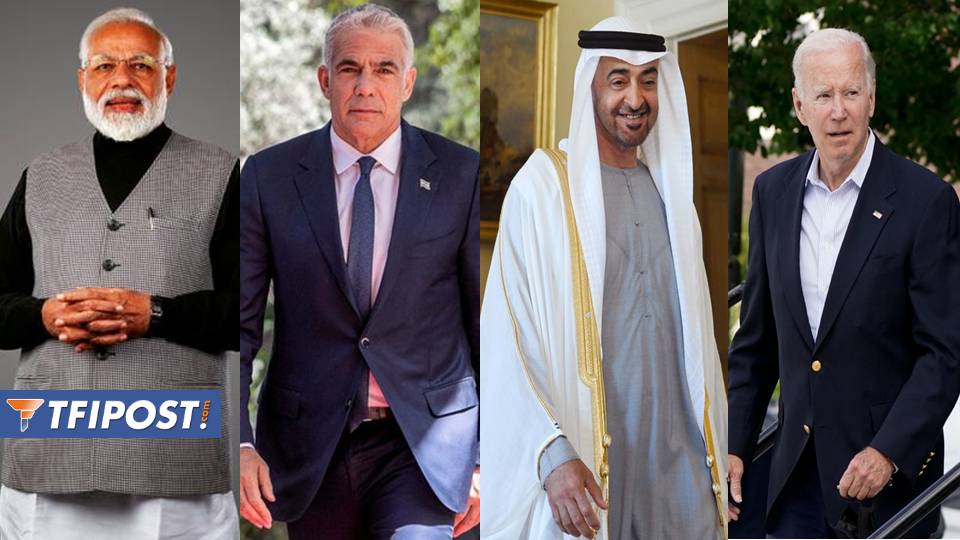The international and the left-leaning cabal are busy calling India’s foreign policy “absurd”. Multiple articles have been published criticising India for adopting a hard stance while dealing with several geopolitical crises. But, in reality we stand different, with a different approach.
While the entire world is busy criticising India and calling its foreign policy “opportunistic”, becoming a part of the West Asian QUAD is actually a wise step. India is already a part of QUAD, and the recent QUAD summit established India’s role in transformation of the region. Now, India is being called to play the central role in the West Asian Quad, which is I2U2.
First I2U2 Summit to be held on July 14
The first virtual summit of I2U2 is to be held on July 14, after being formed in October 2021. Here, I2 refers to India and Israel, while U2 refers to the US and the UAE. Prime Minister Narendra Modi will join his Israeli counterpart Yair Lapid, UAE’s head Mohammed bin Zayed Al Nahyan and US President Joe Biden.
The agenda of the formation of the group as well as the summit is focused on economic cooperation and infrastructure development. However, the US aims at increasing the integration of Israel into the region. India has its own concerns and sticking to that India is all set to play the central role in the West Asian QUAD.
India’s ties with Middle East and the US
India holds deep strategic bonds with major powers in the Middle East. India also enjoys a large diaspora, helping it project its soft power. Adding to that, India’s economic heft and geopolitical approach along with growing military power is making the nation indispensable for the region.
Apart from being an oil importer, UAE witnesses India as a source of diversification and modernisation. With massive IT industries, India can help the UAE expand. On a similar note, Israel sees India as a major partner. India and Israel are fighting the same menace of radicalisation and terrorism, which draws parallels between the two nations. Israel also looks up to India, as Israel can put India’s soft power to use to solve its territorial disputes.
The final case is of US, which needs India despite several differences of opinions, in order to counter the assertive China. Also, US and India share too much in common, security, economy and interests in the Indo-Pacific.
What lies ahead for India?
The main concern in the summit might be food security crisis that has emerged due to the Russia-Ukraine crisis. The world has been looking up to India for food exports. The situation was so grave that even the IMF begged India to lift the ban on export. With the capability to feed the world, India might stand out with an edge over the others.
Read More: I2U2 – West Asian Quad is ready with India leading from the front
India is an obvious choice for the US as a partner in its goal of reviving alliances in the West Asian region as India enjoys cordial relations with the neighbouring nations, with the added benefit of strong cultural and historical ties and thriving economic relationships.
India is a significant energy consumer in the Middle East, but it is also a significant exporter of consumer goods and labour to the region. The roping in of India is been analysed as the US’ initiative to counter China’s influence in the gulf region. Also, the US is now embracing India as a more reliable strategic partner in the Indo-Pacific region.
With these benefits lying ahead, India is all set to benefit from the Abraham Accord on whose pretext the association has been formed, and New Delhi can further strengthen its ties with the West Asian nations. With foreign policy on point, now, sky is the limit for India.
Support TFI:
Support us to strengthen the ‘Right’ ideology of cultural nationalism by purchasing the best quality garments from TFI-STORE.COM
